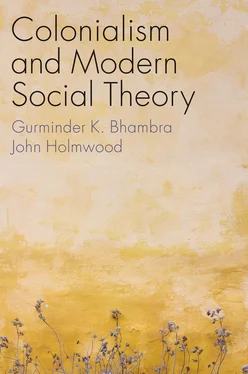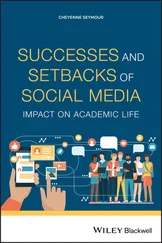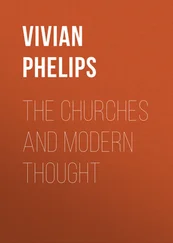In the introduction to his study of Durkheim’s development of social realism, Robert Jones (1999) describes two possible approaches to the interpretation of ideas. Derived from Richard Rorty, the first one is a rational reconstruction that brings historical figures into dialogue with the present and its concerns. The second one is a historical interpretation that takes the writer back to the past and to the discussions that shaped his or her arguments and engagements. The latter approach is perhaps the one that is now most favoured; and it is also the one that informs our discussions throughout the book. It disrupts current conversations by replacing conventional understandings, which serve only to reproduce our current ways of thinking and doing sociology. As we indicated at the start of this introductory chapter, we are also addressing new historiographies that have substantially changed how histories of European modernity are understood. Placing authors in their context through new scholarship about their ideas and intellectual influences should also involve understanding that historical context differently as a consequence of new histories. As we have argued, much of the standard discussion of modern social theory depends on a standard historiography. We draw on these new histories as part of our engagement with that theory.
Our concerns, then, are also about the less fashionable mode of rational reconstruction, a reconstruction focused upon current issues of identity and difference and their relationship to histories of colonialism and empire. In this way we initiate a new dialogue between past and present, a dialogue largely absent from standard sociological understandings of modernity that are themselves represented as owing their first formulation to the authors we discuss. These writers did engage with colonialism and its associated practices of dispossession and forced labour, yet their discussions along such themes have largely been edited out in the process of canon formation. The fact that they could be edited out says something about the way they were initially set up. It also points to limitations in approaches that are carried forward into the present conceptual and methodological ‘jurisdiction’ of sociology and reinforce its problems.
We begin by placing the writings of the authors we discuss in a broader context of social and political thought, which ranges from Hobbes to Hegel. This situates social theory in the context of European liberalism (Seidman 1983) and demonstrates how that liberalism operates through a foundational exclusion of indigenous peoples, enabling their dispossession and subjection to forced labour. At the same time, modern social theory describes itself as embodying a project of freedom, albeit one that is deeply racialised. We look at this dialectic in each of the theorists examined in this book, to show how their constructions were entangled with colonialism. With Du Bois, we show a reverse process, whereby he begins from race – the colour line in the United States – and comes to understand it as a fundamental global division produced through histories of colonisation. Our purpose in this book is to expose the joint significance of colonialism and empire, as an organising principle, to the thought of these writers and thereby to the legacies they bequeath to social theory. Addressing colonial histories is a necessary preliminary to the reconstruction of social theory.
1 1 Quinn (1966) and Canny (2001) suggest that the model was first applied, albeit unsuccessfully, in Elizabethan England during its colonisation of Ireland before being applied with greater success in Virginia.
2 2 Settler colonialism is itself vulnerable to movements of independence against the authority of the metropole, to which the settlers see themselves as ‘equals’ (Veracini 2010). Thus Latin American independence movements that secured freedom from Spain and Portugal occurred in the early nineteenth century. Just as in the United States, they did not dispense with the institutions that typified colonialism, such as forced labour and the continued dispossession of indigenous peoples.
3 3 The ‘Hobbesian problem of order’ that Parsons (1937) discussed was not that of Hobbes’s texts; it was an analytical device meant to express the sociological problem of explaining the coordination of actions outside their framing in terms of utilitarian calculations of self-interest.
4 4 The book gave equal space to the Italian sociologist Vilfredo Pareto and to the English economist Alfred Marshall, but secondary engagements with Parsons’s argument are, for the most part, focused on his discussions of Weber and Durkheim and on his omission of Marx. As Marx comes into the canon, Pareto and Marshall recede.
5 5 The colleges that came to be known as ‘historically black colleges’ were, initially, integrated colleges – integrated by race and gender, albeit attracting few white students. By contrast, other universities serving white students operated segregation but have not been labelled ‘historically white’ (Smith 2016).
6 6 Giddens’s treatment of capitalism makes no room for a discussion of colonialism, enslavement, and dispossession, in contrast to the treatment of the writers he looks at. His only discussion of India, for example, is about its ‘traditionalism’ and how its system of religious belief, including the designations of caste, condemned it to economic backwardness after developments in the centuries before Christ that had produced an urban organisation similar to that of mediaeval Europe (Giddens 1971: 173). This type of formulation is a characteristic trope of Eurocentrism. Indian civilisation is recognised and identified as advanced and India is compared to Europe, but it is compared to mediaeval Europe, that is, to a Europe that has already transcended itself. Europe has the capacity for development, while India is represented as being in suspended animation.
Конец ознакомительного фрагмента.
Текст предоставлен ООО «ЛитРес».
Прочитайте эту книгу целиком, купив полную легальную версию на ЛитРес.
Безопасно оплатить книгу можно банковской картой Visa, MasterCard, Maestro, со счета мобильного телефона, с платежного терминала, в салоне МТС или Связной, через PayPal, WebMoney, Яндекс.Деньги, QIWI Кошелек, бонусными картами или другим удобным Вам способом.












